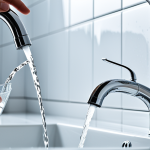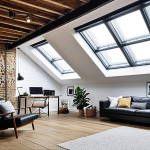Essential Measures for Preventing Algae and Mold in Damp UK Climates
Understanding the conditions that promote algae and mold growth in UK homes is crucial for effective prevention. The UK’s damp weather solutions must target persistent moisture, typically caused by poor ventilation, cold surfaces, and high humidity levels. Areas with limited sunlight, like north-facing walls or shaded corners, are especially vulnerable to algae and mold accumulation. Often, older UK buildings with solid walls or inadequate damp proof courses exacerbate these issues.
Immediate steps to combat moisture include regularly airing rooms, using dehumidifiers, and promptly fixing leaks in plumbing or roofs. These actions significantly reduce humidity and slow fungal growth. Additionally, controlling indoor temperatures to avoid condensation on surfaces further aids algae prevention UK.
Additional reading : Mastering water changes: the ideal schedule for small uk garden pools
Key building features influencing mold control strategies are double-glazed windows without adequate ventilation, overcrowded furniture blocking airflow, and ineffective guttering that causes water ingress. Addressing these aspects through routine maintenance can make a measurable difference in preventing mold and algae in damp climates. These combined damp weather solutions provide a robust foundation for healthier, mold-free UK homes.
Effective Cleaning and Removal Techniques
Effective algae removal UK requires a careful, step-by-step approach to ensure safety and lasting results. Begin by wearing protective gloves and a mask to avoid inhaling spores. For hard surfaces, apply a diluted bleach solution or UK-available eco-friendly cleaning products specifically designed for mold cleaning tips, such as those containing hydrogen peroxide or vinegar. Let the solution sit for 10 to 15 minutes to penetrate the algae or mold before scrubbing gently with a soft brush.
Additional reading : Revamping indoor pools: innovative uk solutions to banish chlorine smells
Ecologically sound choices for algae removal UK keep the indoor environment healthy and reduce chemical residue. Products labeled as biodegradable and free from phosphates are ideal. After cleaning, rinse the area thoroughly with water and dry it completely to prevent regrowth. Proper disposal of contaminated materials, such as sponges or cloths, is essential. Seal used cleaning materials in plastic bags before discarding them in household waste to avoid spreading spores.
These mold cleaning tips, combined with personal protective equipment and responsible waste handling, make algae and mold removal a safer and more effective task for UK homeowners.
Essential Measures for Preventing Algae and Mold in Damp UK Climates
Algae prevention UK and effective mold control strategies start by identifying environments within UK homes where moisture lingers. Damp weather solutions must target areas such as basements, bathrooms, and external walls prone to consistent dampness, especially in older properties with poor insulation. Typically, insufficient ventilation and cold surfaces create ideal conditions for fungal growth.
Immediate steps should focus on lowering indoor humidity: regularly open windows to promote airflow, employ dehumidifiers, and fix leaks promptly to halt water ingress. Avoid overcrowding rooms with furniture that blocks air circulation, as stagnant air encourages algae and mold accumulation.
Key UK building features influencing mold control strategies include single-glazed windows, inadequate external rendering, and guttering systems prone to overflow. Addressing these by upgrading to double glazing with vents, sealing walls where moisture infiltrates, and maintaining gutters are practical damp weather solutions that significantly reduce algae and mold risk. Ultimately, tailored measures for existing structural issues combined with daily moisture control form the backbone of algae prevention UK and robust mold control strategies.
Essential Measures for Preventing Algae and Mold in Damp UK Climates
Algae prevention UK and robust mold control strategies begin by pinpointing the conditions encouraging fungal growth in UK homes. Damp weather solutions specifically target excess moisture caused by persistent condensation and structural vulnerabilities, such as poorly insulated walls and inadequate ventilation.
Immediate actionable steps to reduce moisture indoors include practical measures like increasing airflow by opening windows regularly and using dehumidifiers. Prompt repair of leaks in plumbing or roofs is critical to prevent water ingress. Avoiding overcrowding furniture near walls improves air circulation, directly curbing algae and mold accumulation.
Common UK building features influencing algae and mold include single-glazed windows without vents, old stone or brick walls prone to damp, and ineffective guttering systems leading to water pooling. Addressing these with upgrades such as installing vented double glazing, improving external wall insulation, and maintaining gutters can significantly reinforce damp weather solutions. Combining these targeted interventions forms an effective defense, enhancing algae prevention UK and comprehensive mold control strategies.
Essential Measures for Preventing Algae and Mold in Damp UK Climates
Algae prevention UK and mold control strategies begin with recognising specific conditions that encourage fungal growth inside homes. High indoor humidity combined with poor ventilation creates ideal damp weather solutions targets. Areas prone to condensation, such as bathrooms and basements, require particular attention. Effective algae prevention UK involves early identification of moisture accumulation sources like leaks or blocked airways.
Immediate actionable steps to reduce moisture indoors include regularly airing rooms, using dehumidifiers, and promptly fixing leaks. Avoiding overcrowded furniture that obstructs airflow enhances natural ventilation, vital for mold control strategies. Equally important is controlling indoor temperatures to prevent cold surfaces where condensation forms.
Common UK building features affecting mold and algae accumulation include old solid walls with inadequate damp proofing, single-glazed windows lacking vents, and poorly maintained guttering systems leading to water ingress. Damp weather solutions should focus on upgrading to vented double glazing, external wall insulation, and reliable gutter repairs. Implementing these combined strategies not only addresses existing moisture problems but also fortifies homes against recurrent algae and mold challenges.






